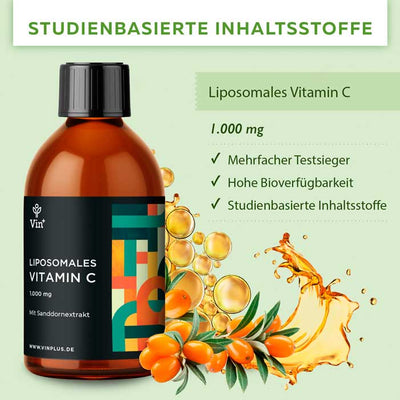
First of all, it should be clarified what an oral irrigator actually is. An oral irrigator is an "instrument" for oral hygiene. With this, food residue and plaque can be removed from the interdental spaces using the water jet and without using a toothbrush.
The principle of the oral irrigator
As a rule, a tooth shower works with a single jet of water, which flushes the leftovers and plaque out of the interdental spaces and teeth. The advantage of the oral irrigator compared to dental floss: It also reaches spaces between the teeth that are otherwise difficult to reach and even narrow teeth can be cleaned in this way.
The History of the Oral Irrigator
The oral irrigator was invented in 1962 by dentist Gerald Moyer and engineer John Mattingly. The two inventors sold the device in their company Aqua Tec, which was bought by Teledyne in 1967. In 1975 it was renamed Teledyne Waterpik and today Waterpik is the market leader in the USA. In the US, the Waterpik brand and water pik are synonymous with the term oral irrigator. However, where there are advantages, there are often disadvantages and this is no different with the oral irrigator. Dentists classify this as a wellness product, since from a dental point of view it cannot replace sensible cleaning with a toothbrush and the use of dental floss. From the dentist's point of view, the oral irrigator only improves blood circulation in the gums due to the massage effect. Furthermore, the dentists also see a danger from incorrect use of the device. Then it can happen that food residues are flushed into the tooth pockets and then tooth and gums are damaged. Therefore, dentists often advise against using a tooth shower. However, recent studies have found that flossing is inferior to oral irrigator when it comes to removing plaque. Stiftung Warentest and other testers have also taken on the oral irrigator and tested a wide variety of models.
This is what Stiftung Warentest says:
According to Stiftung Warentest (April/2014), an oral irrigator is only partially suitable for cleaning the interdental spaces. The use of the device should always be preceded by a thorough brushing of the teeth, since the shower only removes the loose leftovers of food, as well as the plaque that was loosened with the brush. According to the testers, the oral irrigator is powerless against stubborn plaque. However, it is well suited to cleaning hard-to-reach areas where the brush cannot reach, for example under dentures, bridges and braces. People who are prone to inflammation of the inner lining of the heart (endocarditis) are advised not to use an oral irrigator, as the endocarditis pathogens in the oral cavity are pushed into the bloodstream through use. If you're confused now, that's understandable, so now let's go into more detail about the tests and the oral irrigator. Tests from Test.com and the Stiftung Warentest were used as sources to offer you the best possible information.
The testers say: An oral irrigator is the perfect complement to the toothbrush. A well-groomed set of teeth and thus a radiant smile is our calling card, but for this we also have to give our teeth some cleaning and care and that means "just" brushing your teeth is not enough. The interdental spaces make up 40% of the entire tooth surface and these can be thoroughly cleaned of leftover food using the oral irrigator, which prevents tooth decay. However, the most diverse models are offered and more and more are coming onto the market that supposedly offer groundbreaking extras. But more on that later. If you want to buy an oral irrigator, then you should definitely do three things, consult an oral irrigator test, read reviews and also do a price comparison. This way you can avoid a bad buy and you can be sure to get a model with the best price-performance ratio. An oral irrigator test is based on various criteria: These include handling, ergonomics, cleaning performance, appearance, volume, durability, processing quality and equipment. The volume of the water tank also plays a major role, because if it has to be constantly refilled, that is a shortcoming and the number of nozzles supplied is also included in the test result.
Using an oral irrigator correctly

Oral irrigator in the 70s[/caption] As already mentioned, dentists are very divided when it comes to using an oral irrigator and therefore recommend using dental floss. Others point out that using the shower incorrectly can cause harm, and that is correct. Because incorrect handling can lead to food residue and bacteria getting into the tooth pockets and this leads to inflammation. But if the oral irrigator is used correctly, it can be an excellent replacement for dental floss and can also be used several times a day due to its easy handling. However, the best device is of no use if it elapses in the closet. Most users of a dental shower enjoy the light and pleasant massage. However, it is important to never forget that the oral irrigator can never replace the toothbrush. Before the oral irrigator is used for the first time, the dentist should be consulted in any case, who will then carry out a thorough cleaning of the teeth so that all plaque is completely removed. Otherwise, the water pressure can damage the gums or wash them too deeply into the tooth pockets. Children should never use an oral irrigator because they use it improperly.
It's not just teeth that need cleaning
In the mouth, hygiene is the be-all and end-all and the same applies to the oral irrigator. If such a device is not cleaned properly, it can become a health hazard as bacteria and germs can spread in the water tank. It is therefore extremely important that it is always thoroughly cleaned. As a rule, manufacturers offer models that have a removable water tank, and some of these are even dishwasher-safe. This guarantees quick and, above all, hygienic cleaning. It is also important that the oral irrigator dries completely after use so that no breeding ground is created for germs. After use, the water tank should therefore be emptied and ventilated, so that the moisture can escape quickly.
Three oral irrigators tested
1. Philips Sonicare AirFloss
With a recommended retail price of around 84 euros, the oral irrigator is a bit more expensive, but it impresses with its good cleaning results. The oral irrigator was scrutinized by the various test institutes and put through its paces, and all of them had excellent test results. The market potential of the Philips Sonicare AirFloss lies primarily in its simple and unproblematic use. It enables quick and thorough cleaning of the interdental spaces, in contrast to other mechanical methods such as dental floss. The oral irrigator from Philips works with a combination of compressed air and water, which makes it easy to remove plaque in the interdental spaces.
The features of the Sonicare AirFloss
- Very good plaque removal using the water jet
- A simple and uncomplicated handling
- Large water container for two standard applications, which is also easy to fill.
- Long battery life up to 14 standard applications
The Philips oral irrigator looks like an electric toothbrush. The cleaning unit – the nozzle – is placed on the water tank, which also acts as a handle. To ensure battery operation, a charger is supplied with the device.
function and handling
Here, the manufacturer uses the microburst technology it developed, put simply, a high-pressure cleaner principle. The finest water droplets are transported into the interdental spaces with the help of compressed air at a speed of around 70 km/h. This loosens food residue and plaque and chases it out of the spaces between the teeth. However, it should be noted here that this device is not an oral irrigator, even if it is offered as such by the manufacturer. The bottom line is that this oral irrigator is a recommended alternative to using dental floss. Interdental cleaning is possible with the Philips Sonicare AirFloss at the push of a button. It can certainly be said that the Philips oral irrigator makes even cleaning the interdental spaces attractive for interdental muffles. However, the device is only recommended for people whose interdental spaces are not too narrow or too wide.
2. Braun Oral-B Professional Care OxyJet
Here you can choose: cleaning or massage - a simple movement is enough and the Oral-B Professional Care OxyJet is switched from the cleaning function to massage. The oral irrigator from Braun changes the water jet from mono to a rotating jet, which reaches under the edge of the gums and thus delivers a particularly good rinsing result. Another version of the water jet is enriched with air and according to the manufacturer, not only the leftovers are effectively washed away, but also bacteria. The intensity of the water jet can also be adjusted in five different levels. The water tank holds 600 milliliters, which is large enough to rinse out the entire mouth. The scope of delivery of the Braun Oral-B Professional Care OxyJet oral irrigator includes: 4 nozzles (all color-coded with a small ring), so that there is no confusion within the family.
Advantages
- Good rinsing performance - or strength and range of variation of the water jet
- Good handling
- Clear purchase recommendation from most customers
- Very good value for money
Disadvantages
- Hose becomes porous after about 2 years (according to customer opinions)
- A little too loud
Conclusion
The Braun Oral-B Professional Care OxyJet oral irrigator hardly shows any weaknesses despite smaller negative customer opinions. That's probably why its reputation is so good and justifies the price of around 70 euros (RRP). Otherwise, a good cleaning effect can be achieved with this oral irrigator and is a recommended alternative to dental floss.
3.Panasonic EW-DJ40
The EW-DJ40 from Panasonic is small and handy in design and does not take up much space due to the small charger. During use you are not hindered by a hose and the individually adjustable water jet removes all leftovers optimally. At the same time, the water jet massages the gums, resulting in better blood circulation. If you prefer to use a mouthwash after brushing your teeth, you can fill up the Panasonic with it and carry out the care in the same breath as you remove the leftovers. Thus, a pleasant fresh feeling sets in that is caused by the thorough cleaning.
An oral irrigator for modern people
What's special about the Panasonic EW-DJ40 is that it's so constructed that you can even take it with you when you travel. Because the spray head can be "sunk" into the water tank, so that the device can be safely packed. As far as handling the oral irrigator is concerned, it is surprisingly simple: To fill in the water without mouthwash, simply open the water container and then close it again and the oral irrigator is ready for use. The negative is that the water tank has to be refilled twice for a complete cleaning. Handy, hygienic and time-saving, this is how the oral irrigator from Panasonic can be briefly described. Especially those who travel a lot benefit from this handy oral irrigator, as the battery lasts for a few days and only lasts a few hours before it is fully charged again. Another advantage, this oral irrigator can also be used by children when the braces need to be cleaned, whether at school or when travelling, because the device is light and not easily damaged.
Advantages
- Very good handling
- 2 stage water jet
- Water tank integrated in the handle
- Intensive cleaning possible
- Good value for money
Disadvantages
- Water tank a bit too small, has to be filled twice for a complete cleaning (165mm)
Conclusion
Suitable as a home oral irrigator as well as for travel. The Panasonic EW-DJ40 is an oral irrigator with sophisticated technology. For a price starting at around 40 euros (RRP of the manufacturer 61.99 euros), it is definitely a good alternative to manual cleaning of the interdental spaces, especially since it can also be used for children.








